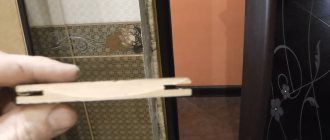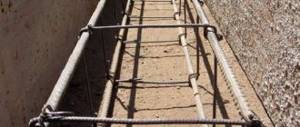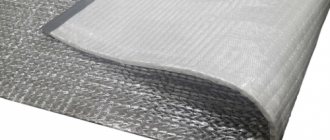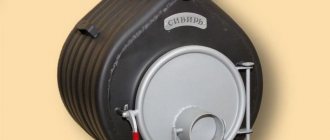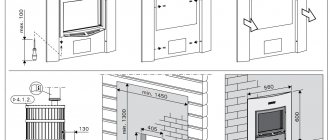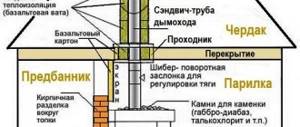Nowadays, installing a door closer, especially the entrance door, is becoming a necessity, because it saves heat in the house, reduces noise levels, and protects people and walls from impacts. It’s easier to turn to the services of a specialist, but if you have the necessary tools and a little experience in installation work, it’s not difficult to install such a device yourself. It is important to prepare thoroughly, study the instructions, understand the design features and carefully install and adjust the mechanism.
There are a large number of models on sale, differing in installation location, mechanism, power and other parameters. The most popular are inexpensive slatted devices that attach to the top of the door and return it to its original position using levers. In addition to traditional levers sticking out of the wall, there are aesthetic, less susceptible to vandalism, but also more expensive systems with parallel or sliding traction.
The power of the device must correspond to the weight and size of the door leaf. Closers are divided into 7 classes. Class 1 mechanisms are installed on doors up to 750 mm wide and weighing up to 20 kg. The most powerful devices of the 7th class are designed for webs up to 1600 mm wide and weighing up to 160 kg. On a wider or heavier canvas, two door closers are installed.
It is necessary to pay attention to the operating conditions. All door closer mechanisms are based on a combination of oil-filled containers and a spring that accumulates opening energy. The device closes the door when the spring straightens, gradually pushing oil through small holes.
If the device is installed in an unheated room, at low temperatures the oil thickens and closing slows down. A closer that is not designed for operation in such conditions may in this case fail. At the same time, there are devices in which, at low temperatures, the holes automatically expand, restoring normal closing speed.
Many door closers have additional options, such as opening braking, locking in the “open” position, a delay for some time before closing, and others.
More complex and advanced cam mechanisms can be mounted in different places. Sometimes they are already built into the canvas at the factory. Installation under the threshold or inside the door frame is also possible. But such work is more complex and is performed by specialists.
Device and principle of operation
The design of a factory-made device is quite complex. The spring mechanism works on compression when opening, and the smooth movement when closing is ensured by a piston system filled with oil. The mechanism housing must be sealed. Making such a device with your own hands is quite difficult.
A homemade door closer, created with your own hands, like a factory-made device, can be based on the elasticity of the material. But at home it is easier to make a lining that acts like a spring, stretching when the door is opened. Returning the closer to its original position attracts the door leaf to the frame, closing it.
The gravitational design is no less simple. The principle of operation of a weighted door closer is that the door returns to its place under the influence of gravity, which puts pressure on the weight, which pulls the door into the closed position.
Installation methods
Based on the installation principle, door closers are divided into four types:
- Outdoor installation. Such models consist of two blocks, one of which is attached to the door leaf, the other to the lintel of the door frame. They are connected using movably articulated levers. Installation methods for such models are shown in the figure.
- Hidden installation in frame. A hole is cut out in the lintel of the door frame and a door closer is installed into it. A lever is attached to the top of the door leaf.
- Hidden installation in the floor. This type can often be seen on glass swing doors in stores. Installation with a door leaf made of any material is possible, but only at the stage of installation or general reconstruction: it is necessary to make a recess in the floor under the body of the closer.
- Hidden installation in the door. In this case, a recess is made in the upper end of the door into which the device is installed, and the lever is attached to the door jamb.
Installation methods may be different.
Any of the installation options can be done with your own hands. It just requires varying degrees of skill. The simplest is external installation. It has the widest distribution.
Options for door closers that you can make yourself
A simple door closer can be easily made with your own hands from a piece of rubber. The elastic material meets all the requirements for the product: it stretches and contracts with a force sufficient to return the door to its zero position. The rubber density must be selected depending on the weight of the door leaf: the heavier it is, the thicker the tape should be used for the door closer.
When installing the device, the ends of the tape are secured as follows:
- the first - on the frame at a distance of 5-10 cm from the plane of the canvas adjacent to it;
- the second - on the panel itself.
To adjust the force when opening and closing the door, measure the distance at which the end of the tape is fixed to the door leaf. The farther it is from the hinged side, the more the rubber closer will contract.
Another option for making a closer - gravity - involves the use of a cable with a load. The end of the cord should be attached to the canvas at the top. For reliability, a metal plate with a hole can be used: it is easier to tie a cable to it.
To make a block mechanism, you need a bracket with an axle (for example, from a broken furniture roller or skateboard). If it is possible to use a ready-made block, the task becomes easier, but if it is not available, you can do it in 2 ways:
- the cable is simply thrown over the axle;
- make a wheel with a groove for the cord and install it in the bracket.
In the latter case, the cable will slide more easily. It will be possible to attach a weight to the free end of the cord that is sufficient to pull the door leaf to the frame.
Car enthusiasts have the opportunity to make a door closer with their own hands from the lifting mechanism of the luggage compartment of a sedan or hatchback car. This unit is distinguished by the presence of shock absorption and smooth opening functions. The device must first be modified by attaching plates with holes for attaching to the door frame and leaf.
It is easy to make a compact closer from a small holey rubber ball or a medical bulb:
- The round rubber product is attached to a wooden or metal plate using screws.
- The structure must be installed on the frame from the outside so that the edge of the ball is at the level of the junction of the box and the canvas on the hinge side.
- Place a metal corner on the door that opens outward, close to the ball, the length of one side of which is equal to the diameter of the ball.
When opened, the corner will compress the ball, squeezing the air out of it. By expanding, the ball will force the door to return to its original position.
A magnetic latch is more appropriate on an interior door. It does not perform a closing function, but reliably holds the door in the closed position in the event of a slight draft. To make the structure, you need a strong magnet and a small steel plate. The parts are attached to the frame and canvas so that when the door is closed they overlap each other. If the thickness of the elements is too large, then you can make recesses in the wooden door for them.
Operation and care
The automatic closer does not limit the opening of the sash. To prevent the mechanism from breaking, install a stop that prevents the door from swinging open too much. For models with a slider lever, the limiter is mounted in the guide channel.
Blocking the door open with various supports or manual force to quickly close the door wears out the mechanism, and sometimes even breaks parts. When installed outdoors, the closer body is protected with a visor from precipitation and sun. To extend service life, all moving parts are lubricated.
If the doors have no defects and the conditions of use are met, the closer will serve the time guaranteed by the manufacturer.
Spring closer
The most common type of closers are springs. It is not difficult to install a spring closer with your own hands, and the durability of the device is superior to other homemade designs. There are 2 options for installing the closer:
- in the middle of the box;
- on the top.
The last option is used if you want to hide a spring that is not decorative.
The spring stiffness must be selected depending on the weight of the door. To prevent the sash from slamming when the spring contracts, it is worth installing a shock absorber. The material for it can be a thin rubber hose: it will not prevent the door from closing smoothly when the door is close to the zero position.
The ends of the spring closer are attached to the frame and canvas with special plates with hooks. When installed on the side of the box, fastening to the frame is done from the hinge side. Depending on the distance from this point to the fastening on the leaf, you can adjust the force of slamming the sash.
The top installation option can be different, and the door closer can be fixed with your own hands in any convenient place on the upper side of the frame and near the edge of the door leaf.
It is convenient to install the shock absorber at the junction of the canvas and the frame on the side of the hinges. You can secure the hose with glue (liquid nails) or self-tapping screws. When the spring is activated to close, the edge of the canvas will rest against the rubber product, and then will be gently pulled towards the frame.
Adjustment and maintenance of the closer
It is impossible to talk about adjustment “in general”: different manufacturers install screws in different places. Somewhere they are located on the side surface, somewhere under the removable panel on the front part, at the bottom or top of the case. Simple models have only two adjustment points, while more complex ones can have five or more. Therefore, each model has its own instructions.
In general terms, we can only talk about periodicity. As the temperature decreases or increases, the viscosity of the oil changes. And its condition changes the speed of door slamming. Doors that close too quickly cause inconvenience: they push the person passing behind. Older people will definitely not like this. Slowly closing doors make you want to help them and push them. But for the mechanism, this help is death: several dozen assistants and you will have to buy another mechanism. Therefore, timely seasonal adjustment of door closers prolongs their life.
We need to talk about adjusting the closers only in relation to each model: they are too different in design
Maintenance of the closer consists of changing the oil in the housing. This must be done once a year. The procedure is described in detail in the instructions and differs for different models, just like the adjustment.
Settings
Setting up a homemade mechanism is as follows:
- the speed of movement of the sash in a homemade product is regulated by changing the length of the elastic element (in spring structures) or the weight of the load (in gravitational ones);
- To change the adjustment to the zero position, change the thickness of the shock-absorbing hose.
When setting up, you can take into account other design flaws, for example, install a shock absorber on the load if it touches the wall, enlarge the hole in the ball if the door is difficult to open, etc.
Adjustment
After installing the door closer, adjustments are made; at this time, the knee lever should be positioned at an angle of 90° relative to the door leaf. The automatic door closer is adjusted using screws located on the mechanism body. After each turning with a screwdriver in the directions indicated by the arrows, the speed of the sash is tested.
The closing mode is adjusted in two door opening zones: 180–15° and 15–0°. The screws cannot be completely unscrewed. Depressurization of the housing may occur followed by oil leakage.
DOORS - AUTOMATIC | MODEL CONSTRUCTION
There are so many devices that can be invented to make the front door close on its own. These include special spring loops, cargo devices with counterweights and a block system, and all kinds of springs or rubber strips. There are also those produced by industry, however, unfortunately, they are not without drawbacks: some are too complex and quite expensive, others are inconvenient to use or unreliable, and quickly fail. Therefore, home designers continue to solve these problems on their own, as evidenced by the proposed selection of materials sent by readers. In winter, the entrance doors of our houses are often left open. This leads to excessive consumption of energy required for heating staircases. To preserve precious heat, simple automation is needed.
However, you can do without mechanical devices by ensuring a slight tilt of the entire door frame. The main drawback - the door hitting the frame - can be easily eliminated by laying strips of thick rubber along the vertical part of the door frame.
Rice. 1. Spring door closing mechanism:
1 — rubber shock absorber, 2 — door, 3 — spring.
To ensure tight closure, use a device with a weight connected to the door using a cable passed through a block. Depending on the installation location of the latter, the returning moment will either increase or decrease. To limit the angular velocity of the door when closing, the load is placed in a vertical cylinder filled with some liquid, preferably mineral oil. Under the influence of weight, the load will fall in a viscous medium, which will limit its speed and, accordingly, the angular speed of the door. The gap between the pipe wall and the cylindrical surface of the load should be no more than 1 mm.
How to choose a suitable door closer
When purchasing such a mechanism, you should first check its suitable size. The European standard EN 1154 size classification has been developed. There are 7 gradations of closers, taking into account the magnitude of the closing force. When choosing, take into account:
- door leaf dimensions;
- its mass.
First condition. When choosing a suitable door closer model, we focus on the maximum performance of the door. For example, the width of the canvas is 900 mm, and the weight is 70 kg. Then a door closer with size EN-4 is purchased.
Second condition. To make it convenient for consumers to use doors with closers, these mechanisms are developed taking into account the range of acceptable possibilities. For example, the limits EN-2 ÷ EN-4 may be indicated in the technical documentation.
Third condition. Sometimes the effort of one closer is not enough. Then a couple of such systems are installed.
Fourth condition. You need to buy a model so that it fits the already installed door to the maximum. If you choose a system that underestimates the characteristics, the closer will soon fail.
Fifth condition. The closer can be installed in an unheated room or even on the street side. Before purchasing a specific system, you should find out whether it is suitable for such operating conditions. Indeed, with temperature changes, the viscosity of the oil filling the hydraulic system can change significantly.
Sixth condition. When choosing a model, its functionality is assessed. Basic adjustments for most systems include:
- changing the door closing speed;
- change in spring force;
- change in effort to close the door leaf.
The sector from 180º to 15º is taken into account. And in the final section (the so-called finishing) - from 15º to 0º.
What functions should the slamming mechanism perform?
Before you make an automatic door closer with your own hands, you need to have an idea of what it should ultimately provide. The main function is shock absorption - preventing the door leaf from hitting the frame. Along with this, the following functionality is highlighted:
- adjustment - the ability to set the closing speed;
- attraction - if the closure is not tight, the mechanism will close the door itself;
- fixation - the ability to fix the closer in one position.
The last point is not mandatory for factory models either, so in the homemade version, any suitable objects are used as a stopper.
Its closing mechanism must attract and smoothly close the door. For these purposes, ready-made parts from cars or improvised means are used.
Homemade or factory made?
Factory closers have an undeniable number of advantages:
- easy adjustment;
- aesthetics;
- increased reliability.
In fact, their only drawback is the price: it is unwise to spend a lot of money if you need to take care of closing the door leading to the cellar, pantry or garage. In such situations, homemade analogues come in handy. With proper installation and assembly, they regularly perform the functions of a door closer, and at the same time, the cost of creating such an analogue is often limited by the price of the part itself.
What are spring hinges, features of their selection and installation
Spring hinges belong to the category of hidden double-sided awnings and have several names: bar, subway, western. Their distinctive feature is the ability to open the door in any direction, which is why they are also called pendulum.
The scope of application of such loops is in places with high traffic: bars, shops, medical institutions, industrial and retail premises. The installation of these elements has some features, which you can learn about by reading this article.
Spring hinges are usually installed in high traffic areas
The first door hinges in human history were made from animal skin, tree branches tightly woven together, and only much later - from a rough metal plate. Today, door canopies perform not only a practical function, but also a decorative one, decorating the door and the interior as a whole. Types of canopies differ according to several criteria:
- the material from which they are made (steel, brass, bronze, etc.);
- installation method (overlay, screw-in, insertion);
- design features of the mechanism (overhead, mortise, hidden, corner, double-sided).
Let's look at the last classification in more detail:
- Invoices. Hinges of this type are the most popular, due to their ease of installation and low cost.
To install overhead hinges, it is enough to secure them with self-tapping screws on the surface of the door frame and the door itself.
- Mortise. The design of these hinges is almost identical to overhead hinges; the only difference is in the installation method: hinges of this type are cut into the surface of the door.
Installation of mortise hinges requires experience with a chisel
- Screw-in, hidden. These are not the most popular hinges, which is explained by the fact that they are quite difficult to install (inside the frame and door leaf), and after installation, the door leaf cannot be removed without completely dismantling the hinges.
If it becomes necessary to remove the door, you will first have to remove the hinges
- Angular. They differ from all others by the absence of classic cards. Instead, corners are fitted to the central hinge. The advantage of such hinges is the possibility of installing hinge doors on doors with a rebate.
The advantage of corner hinges is that they can be installed on rebated doors
- Double sided. Outwardly, these canopies are similar to ordinary card canopies, but they have their own fundamental differences.
Spring hinges differ from simple double-sided hinges by the presence of a spring
Advantages
The main advantage of bar hinges is their ergonomics, as well as the high throughput of doors equipped with them. The double spring hinge has the following advantages:
- ease of opening the door (using the body) when your hands are busy;
- preventing heat loss in the room through the door;
- the possibility of unhindered passage of a large number of people;
- preventing the formation of drafts in the room;
- automatic door closing.
Flaws
Door spring hinges, well made and installed correctly, have only one drawback: cost. The price of such canopies is several times higher than the cost of classic card canopies.
The installation of spring hinges is not much different from the installation of conventional hinges of the overhead and mortise types. The sequence of actions is as follows:
- At the end of the door, as well as on the door frame, marks are made about the location of each half of the hinge.
- After this, the stopper should be removed from both cards, this will release the spring.
- Next, insert a pin (mandrel) into the hole on the bushing and turn it clockwise.
- The hinge plates are applied to the base and fixed with self-tapping screws according to the diagram below.
Before installation, the spring loop relaxes, and after completion of work it contracts.
- After this, you need to compress the springs. To do this, the door is closed, the pin on each card is turned clockwise and the stopper is inserted.
- First of all, the springs are screwed to the door leaf, and then to the door frame.
Intermediate stage for installing bar hinges
- Upon completion of work, you should check the smooth movement of the door and, if necessary, adjust the spring.
Adjustment process
- When tightening the loops, it is important not to overdo it, since the spring is very easy to break. At this point the installation can be considered complete.
Spring hinges are often installed in restaurants and bars
To clearly understand what spring hinges are, as well as the principle of their installation, it is recommended to watch the video.
